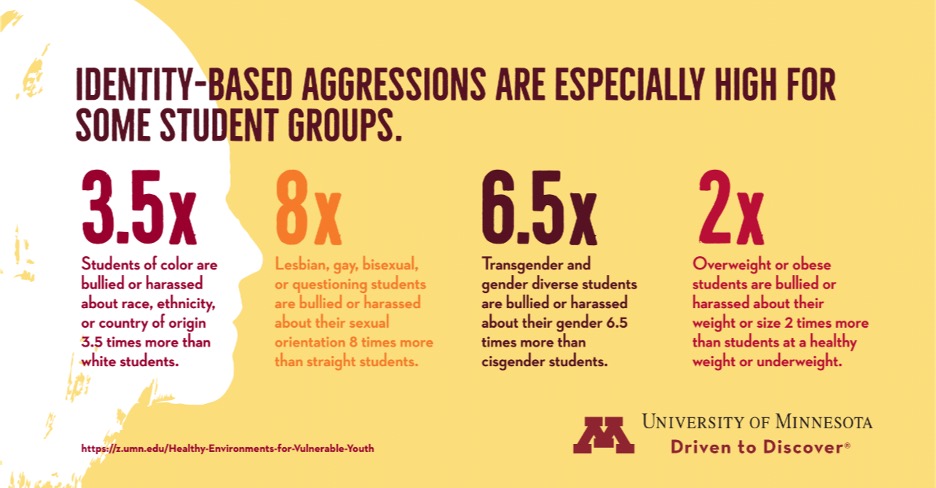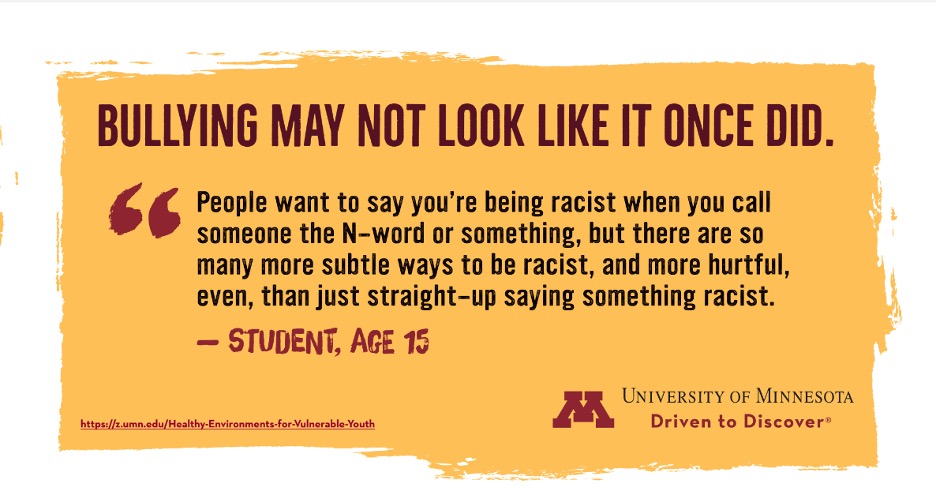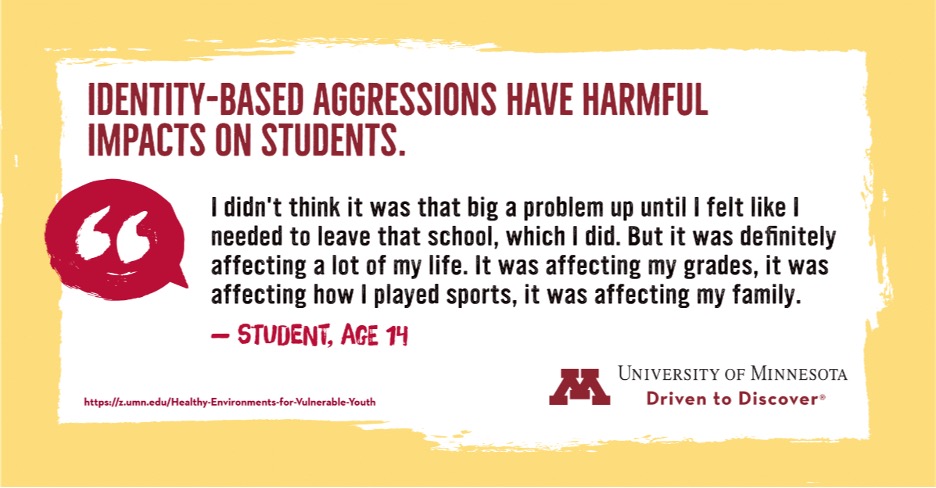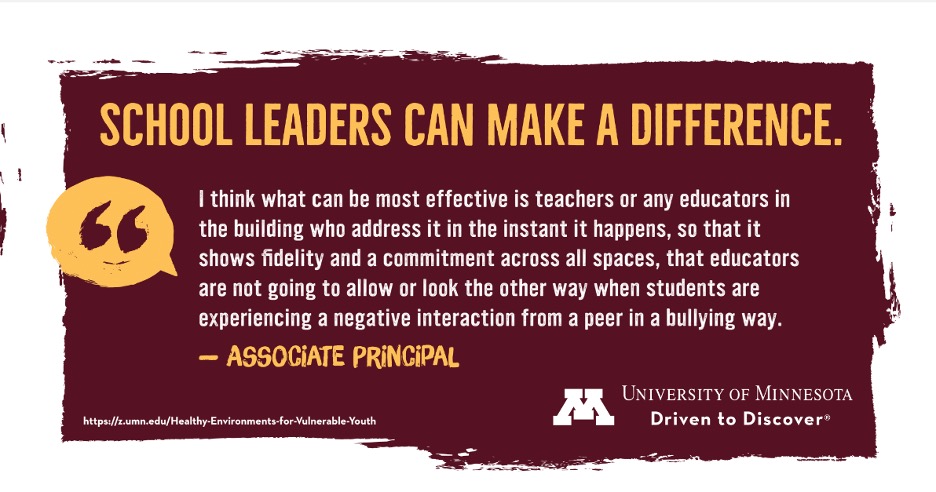Breaking Through on Identity-Based Bullying
For the past two years, Dr. Amy Gower, Research Associate with the HYD-PRC and a research team from the U of Minnesota Department of Pediatrics and School of Public Health have been studying bullying, teasing and harassment of young people based on marginalized race, ethnicity, sexual orientation, gender identity, and body size. This type of bullying, often called bias- or identity-based bullying, is as harmful or more harmful than bullying not based on bias because it attacks young people’s identity and sense of self. The goal of the study was to understand youth, parent, and school perspectives on bias-based bullying and harassment to inform school efforts and prevention program development. We spoke to 13 young people who experienced bias-based bullying and their parents, 4 different youth-led organizations that routinely discussed specific forms of bias, and 7 secondary school teams from around the state. Findings will be reported in published, peer-reviewed academic articles, presented at conferences, and have been compiled into a fact sheet. Please feel free to use this and share widely!
This study had several key conclusions:
- Although there were some instances of traditional bullying, the majority of youth described being the target of or overhearing slurs, name calling, and microaggressions that happened frequently from many different peers. This aggression was rooted in racism, sexism, homophobia, transphobia, and fatphobia.
For example, one student noted, "People want to say you're being racist when you call someone the N-word or something, but there are so many more subtle ways to be racist, and more hurtful, even, than just straight-up saying something racist." - Student, age 15
- Microaggressions – brief acts, intentional or unintentional, that communicate hostile, derogatory, or negative slights and insults – were common and harmful. Targets of microaggressions often did not respond directly or sometimes fought back in frustration after repeatedly being targeted. Targets were often disciplined for retaliating and reported that the aggressor was not usually disciplined.
- Students perceived schools to not take bias-based aggression seriously unless it turned into a physical fight. When schools did act, students felt they “just talked” to the aggressor without following through. This led the majority of students to not report these incidents to adults at school.
- Schools focused on a narrow, legal definition of bullying, which requires repeated actions by the same student, a power imbalance, and intent to harm. Most of the acts youth described as bullying in interviews did not meet this working definition, despite meeting the definition presented in Minnesota state law.
- Schools reported being knowledgeable in their anti-bullying policies that addressed responses to general bullying. Efforts to improve social-emotional learning, focus on conflict management skills, and build relationships with students were key upstream bullying prevention practices. However, these efforts did not directly target bias or stigma.
- Students reported having a hard time focusing on school, and experiencing emotional distress and anger as a result of being the targets of and overhearing bias-based aggressions and microaggressions on a regular basis.
For example, a student reflected, "I didn't think it was that big a problem up until I felt like I needed to leave that school, which I did. But it was definitely affecting a lot of my life. It was affecting my grades, it was affecting how I played sports, it was affecting my family." - Student, age 14
Creating learning environments that are safe and supportive for students with marginalized identities means working to eliminate bias. School staff and administrators can manage all acts of bias-based aggression, including microaggressions, immediately, using recommended strategies (see fact sheets for tips). This sends a clear message about what behaviors are allowed at school – both to the actors and targets of bias-based aggression.
As noted by an Associate Principal, “I think what can be most effective is teachers or any educators in the building who address it in the instant it happens, so that it shows fidelity and a commitment across all spaces, that educators are not going to allow or look the other way when students are experiencing a negative interaction from a peer in a bullying way." - Associate principal
Click here to access the fact sheet.
For more information, please visit the Healthy Environments for Vulnerable Youth website.



